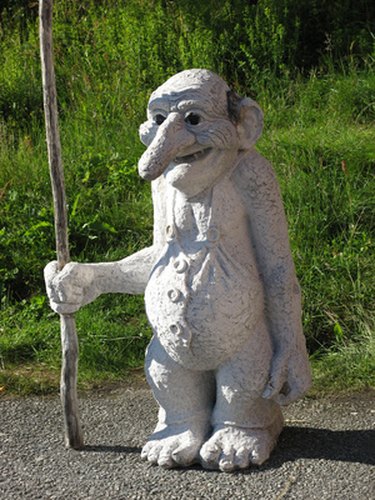Things You'll Need
Fine-textured vermiculite
Plaster of Paris
Water
Measuring container
Bowl
32-ounce. styrofoam cups
Plastic knives
Plastic bags
Sandpaper
Acrylic sealer

Vermiculite is a mineral that expands when heated. It sheds in a process called exfoliation. The mineral has several applications in commercial furnaces, insulation, and as a soil additive for potted plants. Vermiculite can also be mixed with other materials like Plaster of Paris to make durable sculptures. Vermiculite lends itself to more primative designs with simple form rather than highly detailed carving.
Step 1
Mix three parts vermiculite and two parts Plaster of Paris in a large bowl. Add two parts water. Mix well with hands, squeezing out all the lumps. Let the mixture settle until it stops bubbling. This should take no longer than two minutes.
Video of the Day
Step 2
Pour the mixture into 32-ounce styrofoam cups. Tap the sides of the cups to bring any bubbles to the top. Wait for mixture to harden overnight. Cover with plastic bag until ready for use.
Step 3
Remove the cup mold after the mixture has hardened. You should have a semi-soft clay-like substance, ready to carve.
Step 4
Carve using clay tools or utensils such as a plastic knife. Concentrate on shape and form rather than detail work, which is best suited for other carving materials.
Step 5
Dry your completed sculpture at room temperature for several days. You will notice the color of the vermiculite become lighter and the sculpture will weigh less as it dries.
Step 6
Sand any rough edges with sandpaper if desired and apply an acrylic sealer to preserve your sculpture.
Video of the Day